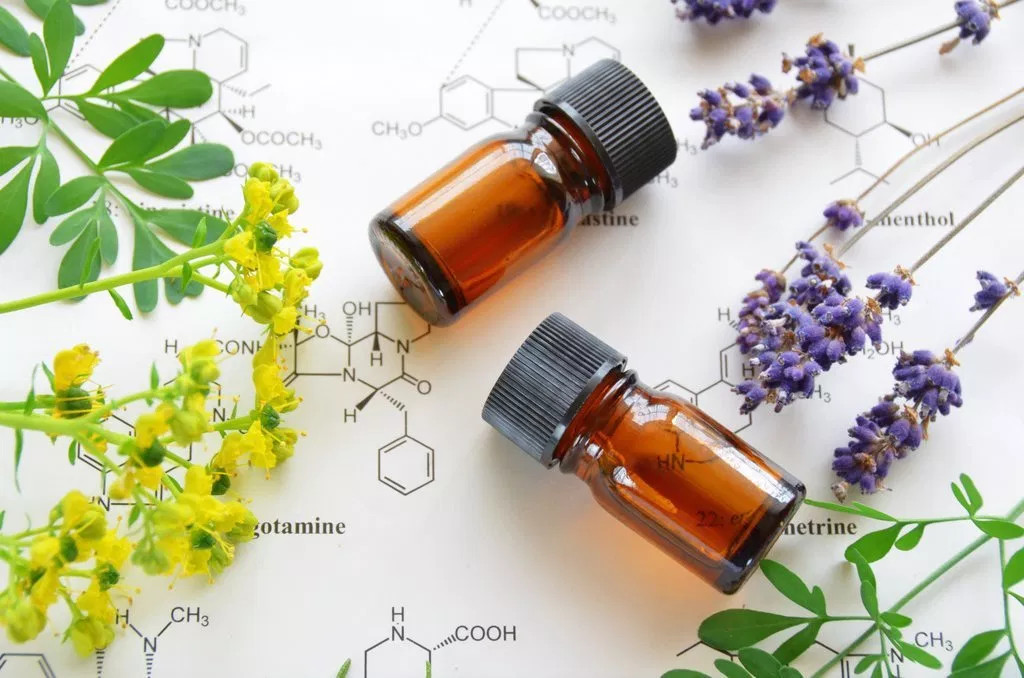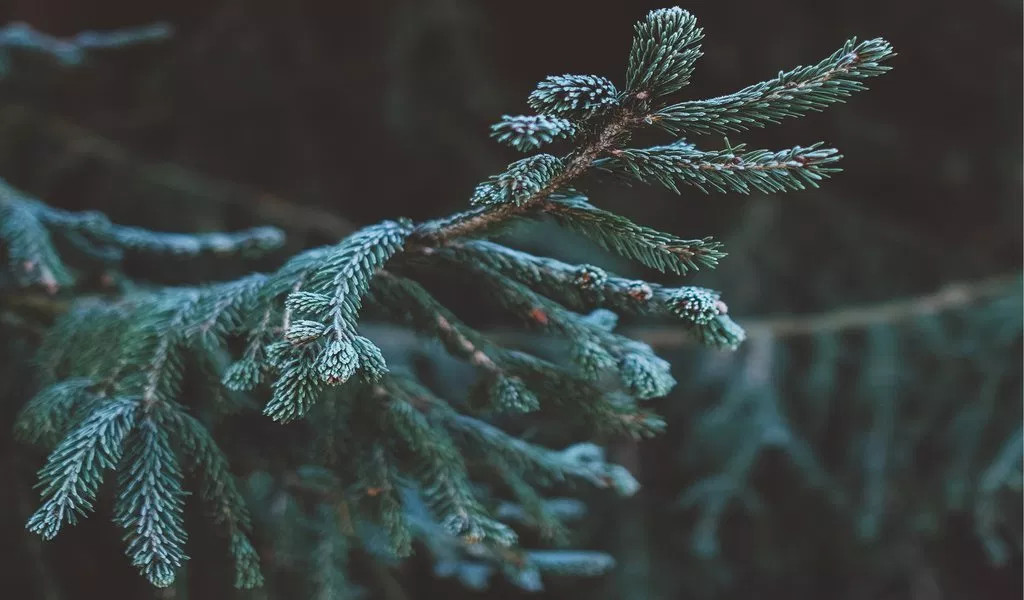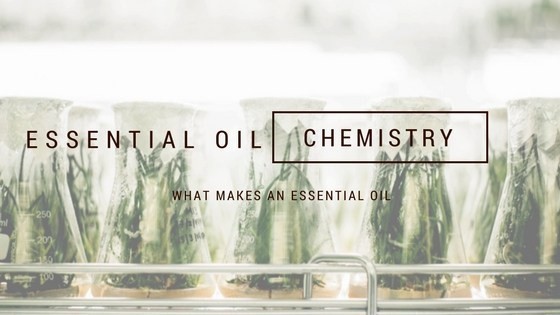The Chemistry of Essential Oils Made Simple
by Dr. David Stewart
The chemistry of essential oils is an amazingly wonderful yet somewhat complicated piece of essential oils to understand. There is so much that goes into the chemistry of essential oils that entire college courses have been dedicated to this topic. I regret to inform you that you will not be getting 3 college credit hours at the end of this, but you should have a better understanding of the basics of essential oil chemistry.
Why is it Important to You?
You may be asking yourself, why is this important to me? Why do I care about the chemical makeup or molecular structure of an essential oil? You may not be interested in chemistry but it’s important to understand for a few reasons.
- If you understand the chemical makeup up of an essential oil you will be able to more easily determine if the oil is adulterated. If you have a 100% pure grade essential oil then it will not contain compounds like propylene glycol.
- Understanding the chemical compounds in your essential oil can help you identify the benefits of an essential oil. This is a big one. By the end of this you should be able to look at the chemical makeup of an oil and identify it's properties. We will even do one together at the end for practice!
- If you are interested in blending or mixing your own oils, then this is a good knowledge base to have.
Basic Plant Biology
If you don’t know by now, essential oils come from plants. But, not all plants produce essential oils. Only certain plants do, and they do it for specific reasons. Knowing this, It is important to understand a little bit about the biology of plants in order to understand the chemistry of essential oils. The first thing that is important to understand is why do plants make essential oils and what do they do for the plant? Plants spend precious energy and resources on the production of essential oils. This is not some happenstance, every so often thing that plants do. Plants have thousands of microscopic “factories” called sacs that are dedicated to the production of essential oil.

Why Do Plants Produce Essential Oils?
Unlike you and I, plants cannot move when something bad is coming their way. Plants have to be ready for cold fronts, bugs, diseases, and heavy winds that damage branches, just to name a few. That’s where essential oils play a huge role. Let’s take a frankincense tree for example. The essential oil is stored in the tree’s sap. When the tree is cut or scratched the sap oozes out of the wound protecting it from the elements. The essential oil rich sap also provides qualities to the tree that prevent scarring and more quickly corrects the tree. Proving this point even more, certain essential oils can only be harvested if the plant is under attack otherwise the plant would not produce the oil. This is especially true for agarwood oil also known as oud oil. In order to distill agarwood for its essential oil, the aquilaria tree must have been attacked by a fungus for a decent length of time. This paired with the low yield amount is why Agarwood oil is one of the most expensive oils in the world.
The Chemical Make-up of an Essential Oil
So now that we understand why plants produce essential oils in the first place, let’s dive a little deeper and talk about the chemical makeup of essential oils. A single essential oil is made up of more than 200 bio-constituents. These diffident bio-constituents are what makes each essential oil unique. Despite the fact that, no two essential oils are alike, there are two main chemical classes or groups that make up essential oils. These groups are subdivided into smaller groups and then subdivided even further. Still with me ….?
Good!
The two main groups are hydrocarbons and oxygenated compounds.
Hydrocarbons
Let’s start by discussing hydrocarbons. Hydrocarbons are hydrogen and carbon-based molecules. When talking essential oils, hydrocarbons can be broken down into alkanes and the more common of the two, alkenes.
Alkanes [al-kane] C n H 2n + 2
Though alkanes are the simplest type of hydrocarbon, not very many essential oils contain alkanes. The essential oils that do contain alkanes contain less than one percent except in the standalone case of rose oil. Rose oil is made up of between 11 to 19 percent alkane. This is why rose oil possesses so many unique properties. Alkanes commonly end in “-ane”.
Alkenes [al-keen] C n H 2n
Unlike alkanes, alkenes are commonly found in essential oils. Some of the most common types of alkenes are monoterpenes and sesquiterpenes. Alkene constituents most commonly end in “-ene”.
-Monoterpenes are found in every single essential oil, the most common being limonene which contains unique properties. Grapefruit and Orange oil contain high amounts of Monoterpenes.
-Sesquiterpenes are also very common. There are roughly 3,000 sesquiterpenes in essential oils and they are primarily responsible for deleting bad information in cellular memory. Oils that contain high amounts of sesquiterpenes include cedarwood and myrrh.

Oxygenated Compounds
Oxygenated compounds are chemical compounds that contain oxygen as part of their structure. Common oxygenated compounds found in essential oils include alcohols, ketones, aldehydes, esters, and oxides.
Alcohols [al-kuh-hawl] C 2 H 5 OH
Alcohols are the simplest oxygenated compound. In essential oils, they are known for their unique properties. Alcohols commonly end in “-ol”.
–Terpene alcohols include menthol, linalol, citronellol, and geraniol. These are the alcohols that are known for their qualities both inside and outside the body. Terpene alcohols have a distinct floral aroma. Essential oils that contain high terpene alcohols are rosewood, lavender, and geranium.
–Sesquiterpene alcohols include santalol, cedrol, and bisabolol. These alcohols are known best for their relief properties. They generally have a woody smell to them. Essential oils that are high in sesquiterpenes are sandalwood, cedarwood, and chamomile.
Ketones [kee-tohn] R’COR (i.e. CH 3 COC 2 H 5)
Ketones play a minor role in a lot of essential oils and a major role in a few others. Ketones have amazing properties that are very beneficial. This is because ketones are extremely helpful in clearing our system of unwanted junk. Ketones generally end in “-one” except for the most common ketone called camphor.
–Camphor is the most common ketone found in essential oils. Camphor, and ketones in general, have a strong, pungent, and penetrating smell. Essential oils that contain high amounts of camphor are rosemary, sage, and ravintsara.
–Carvone is another ketone found in essential oil. This is an interesting ketone because it is the main component in dill oil and spearmint oil, yet these oils have two distinctly different smells. The reason for this is one is D-Carvone and the other is L-Carvone. These ketones are mirrored molecular images of each other and produce two distinctly different products and smells.
Cinnamaldehyde is one of the most unique compounds found in essential oils. It is found in cinnamon bark and cassia oil.
Aldehyde [al-duh-hahyd] CHO
The aldehyde constituents are very powerful and can be detected as the main note in some essential oils even though it only makes up less than one percent of the oil. Aldehydes have a preservative effect. Essential oils containing aldehydes are known to have profound effects when inhaled. Aldehydes end in “-al” or “-aldehydes”.
–Cinnamaldehyde is another unique compound found in essential oils. The aroma is a distinct cinnamon smell. This is used in many flavorings and is found in cinnamon bark and cassia oil.
–Octanal is found in lavender, rose, and a variety of citrus oils. It is known for being an overpowering aroma even when very little of it exists in an oil. It is said to be one of the main notes in lavender but is only found in small amounts.
Esters [es-ter] (i.e. C 4 H 8 O2)
Esters are a result of an alcohol and an acid reaction. They are known for their pleasant fruity and floral smells. The most common ester found in essential oils is linalyl acetate. Esters are found in almost every essential oil to some degree. The more an ester is present in an oil the more unique the oil tends to be. Esters generally end in “-ate” or “-oate”.
–Linalyl acetate is the most common ester found in essential oils. It can be found in lavender, clary sage, and bergamot. All these oils have wonderful qualities.
–Bornyl acetate is found in most needling plant oils such as pine, spruce, juniper, and fir. It has a very distinguishable pine aroma and is used in many different products for its scent as well as its other properties.
–Benzyl acetate is a compound found in jasmine and ylang ylang oil. Like the other esters we have discussed, it is known for its own unique quality. This is an ester that is known for it’s more floral aroma as opposed to a fruity one and is oftentimes used in perfumes.

Ethers [ee-ther] R’OR (i.e. C 2 H 5 OC 2 H 5 )
Ethers, also known as oxides, are created when terpenes, alcohols, ketones and other compounds oxidize. They are not as common in essential oils as some of the other compounds previously mentioned, however, they do serve their purpose in the essential oil industry. Ether compounds typically end in “-ole”, “-cin”, or “-ether”.
–1,8-Cineole is the most common ether compound found in essential oils. It can be found in eucalyptus blue oil which is used for the benefits it provides. Oils containing 1,8-cineole are an excellent choice during the winter months. 1,8-cineole can also be found in rosemary and thyme.
Multi-class Compounds
These are the compounds that cannot be defined as one constituent. Multi-class compounds are molecules that are a combination of several compounds such as ethers, aldehydes, ketones, and alcohols. These compounds don’t have anything in common, they are only grouped together because they can’t be grouped into a single constituent category.
-Methyl salicylate is found in wintergreen and birch oil. Wintergreen is more commonly used compared to birch due to the price and availability of the oil.
–Eugenol is a component found in cinnamon leaf and clove oil. Eugenol is known for its fantastic properties. Some people describe eugenol to have a warming-sensation.
-Vanillin is what makes up more than 90% of vanilla oil. It is a key component in the flavoring and scenting of different products worldwide. Vanillin is the only “vanilla” flavor and aroma found in nature.
Using What You’ve Learned
So now you have a basic understanding of essential oil chemistry-but how do you use this knowledge? Why is it important to you? Let’s look at an example oil and its constituents and see what we can determine about the oil.

The key components in lavender oil are as follows:
- LinalylAcetate (21-47%)
- Linalol (23-46%)
- Cis-Beta-Ocimene (1-8%)
- Trans-Beta-Ocimene (1-5%)
- Terpinen-4-ol (1-8%)
As we can see, lavender oil is made up of mainly linalyl acetate which is an ester and linalol which is an alcohol. Based on what we have learned, we can safely assume that lavender oil contains unique properties. We can also expect lavender oil to have a sweet floral aroma. All of these are true about lavender oil.
Since each oil has many different constituents, you can see why it is important to get a 100% pure grade oil when you purchase. An oil made up of synthetics will not have the constituents of a pure oil--and you will not see the same benefits.
So while you didn’t come away with a degree in essential oil chemistry, I hope you feel better equipped to understand individual essential oils and their properties. If you are like me and you want to learn even more about essential oil chemistry, feel free to check out The Chemistry Of Essential Oils Made Simple by Dr. David Stewart,PhD.
Ready to get started?--click below!

Since each oil has many different constituents, you can see why it is important to get a 100% pure grade oil when you purchase. An oil made up of synthetics will not have the constituents of a pure oil--and you will not see the same benefits.
So while you didn’t come away with a degree in essential oil chemistry, I hope you feel better equipped to understand individual essential oils and their properties. If you are like me and you want to learn even more about essential oil chemistry, feel free to check out The Chemistry Of Essential Oils Made Simple by Dr. David Stewart,PhD.
Ready to get started?--click below!



